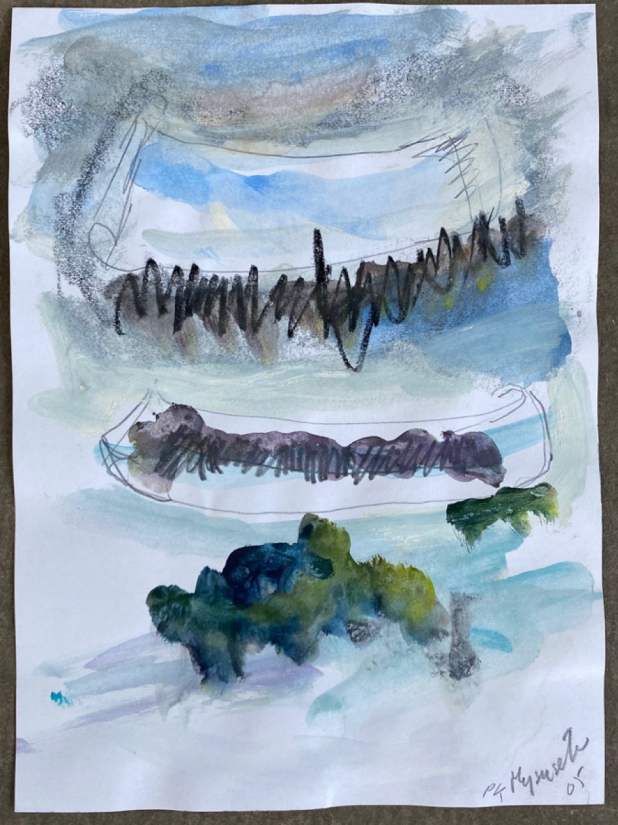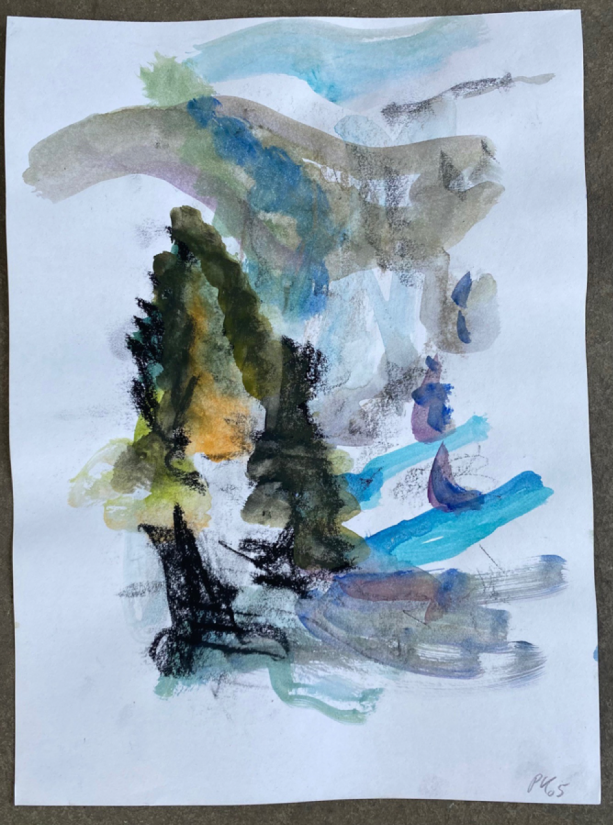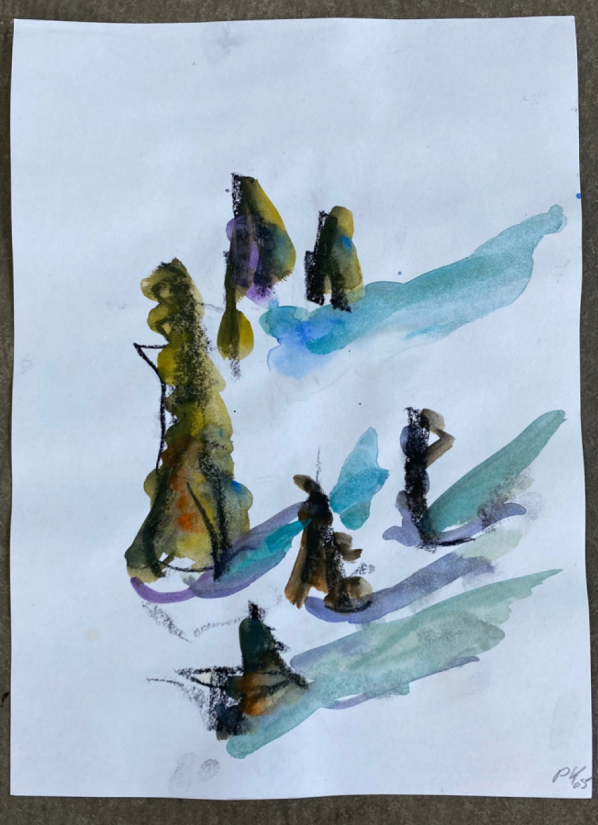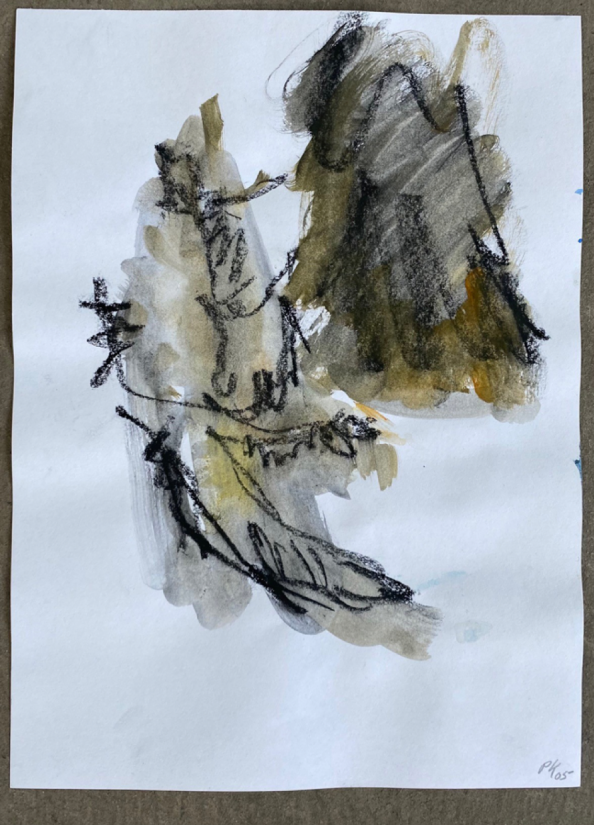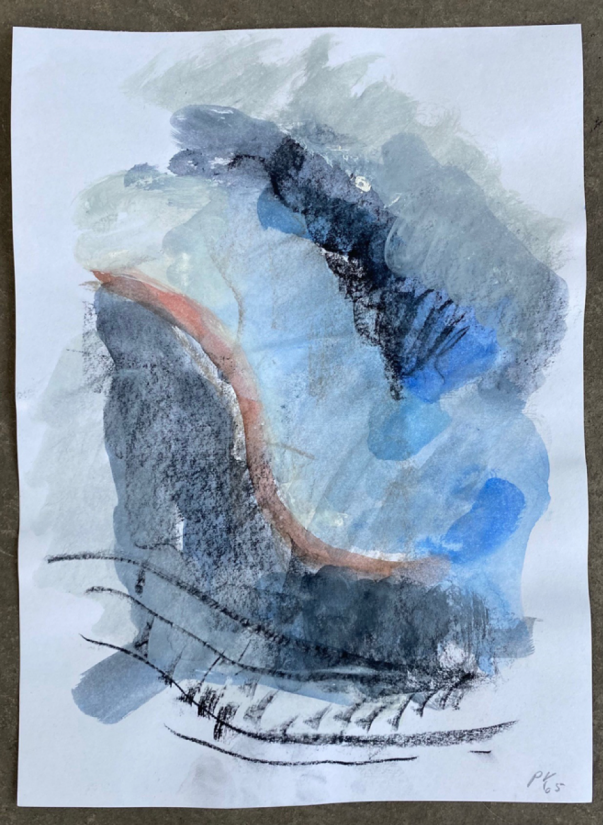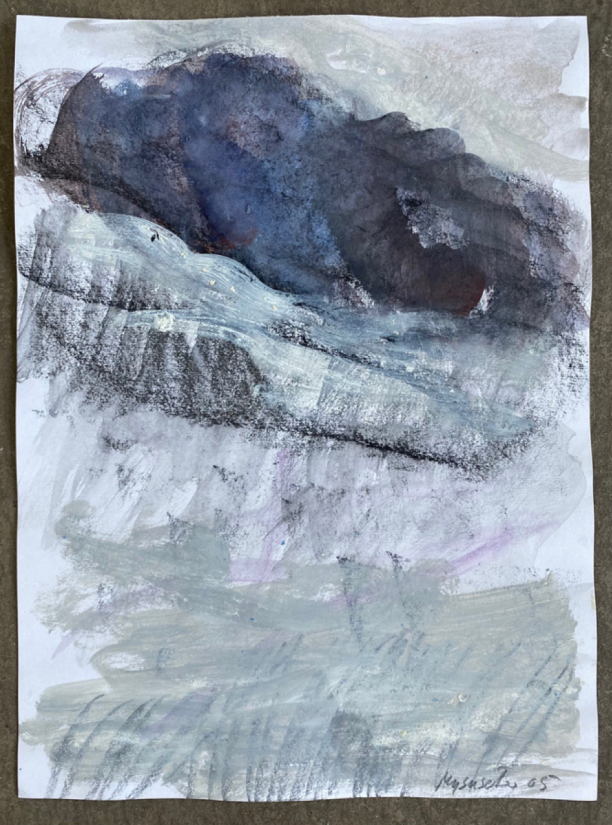The six gouaches and nine etchings were created at Mysusæter in 2005 and represent Kirkeby’s interpretation of the winter landscape in eastern Norway, balancing between atmospheric mood and abstract structures.
Nature played a significant role in an artistic practice that was manifested in a wide range of media over the course of his life. Many of the topics of his late paintings and drawings draw their inspiration from landscapes.
Mysusæter as a refuge and a source of inspiration
Per Kirkeby’s art often related to the place where it was created, for example Greenland or the Danish island of Læsø. Or, in this case, Mysusæter, a Norwegian village 10 kilometres north of the city of Lillehammer, close to Gudbrandsdalen and bordering on Norway’s oldest national park, Rondane. Kirkeby visited Mysusæter several times with close friends to go skiing.
During his visits, Kirkeby drew or painted structures and impressions from nature. Many of these pieces were done on paper, but some are paintings. Among the latter is Mysusæter, owned by the Metropolitan Museum of Art in New York, which demonstrates the profound impact the area had on his art.
Lillehammer Art Museum
Lillehammer Art Museum is the only art museum in Norway’s Innlandet county. A key part of the museum’s purpose is to collect and present art with a connection to the region. Three private art collections served as the museum’s foundation. It was established in 1994 and now has a collection of approximately 1500 works of art spanning from the 19th century to the present day. Prior to this purchase, Per Kirkeby was not represented in Lillehammer Art Museum’s collection.
About Per Kirkeby
Per Kirkeby (1938–2018) graduated from the University of Copenhagen in 1964 with a degree in geology. Concurrent with his studies at the University, he attended the experimental art school Eks-skolen in Copenhagen, where Poul Gernes was one of his teachers. He undertook many trips and expeditions, including to Greenland, Central America and Norway, where he also found artistic inspiration. He is represented in many important collections abroad, including Tate Modern in London, MoMA in New York and Centre Pompidou in Paris, and created several large decorative commissions in the public space, including the ceiling paintings and murals at the Geological Museum and Aarhus University as well as his brick sculptures, which are found on numerous sites in the public realm.
